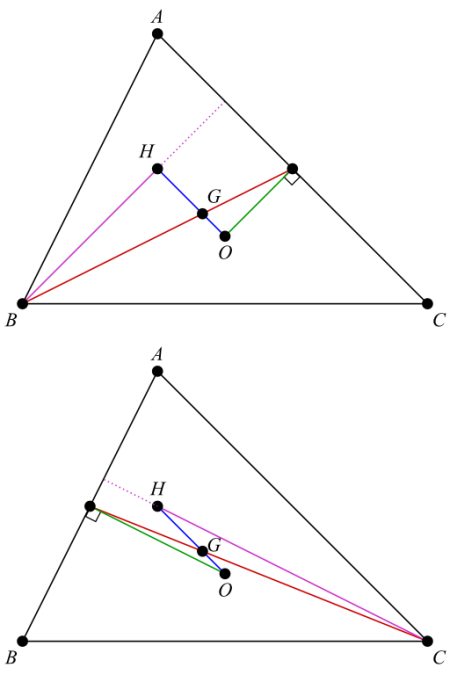Continuing the series on triangle centers, let us consider ∆ABC, with circumcenter O and centroid G. Construct the line segment OG, and extend it out from G to the point H such that GH=2OG.
Next, construct the median from vertex A to the midpoint M of side BC. Then G lies on AM, with AG=2GM, as we showed here. Recalling that the circumcenter is the intersection of the perpendicular bisectors of the sides, we see that OM⊥BC.
Now, since AG=2GM, GH=2OG, and ∠AGH≅∠MGO, we see (by the SAS similarity condition) that ∆AGH~∆MGO. And since these triangles are similar, corresponding angles ∠HAG and ∠OMG are congruent. However, these are alternate interior angles for lines and
cut by transversal
, and therefore
. And since OM⊥BC, we see
, and
is the triangle altitude from A to BC.
Analogous constructions show that H must also be on the triangle altitudes from B and C:
Thus, we see that H is the orthocenter of ∆ABC. So, we see that for any non-equilateral triangle, the circumcenter O, centroid G and orthocenter H are collinear, with GH=2OG; the line through these triangle centers is known as the Euler line of the triangle. (For an equilateral triangle, O, G and H are all the same point.)


